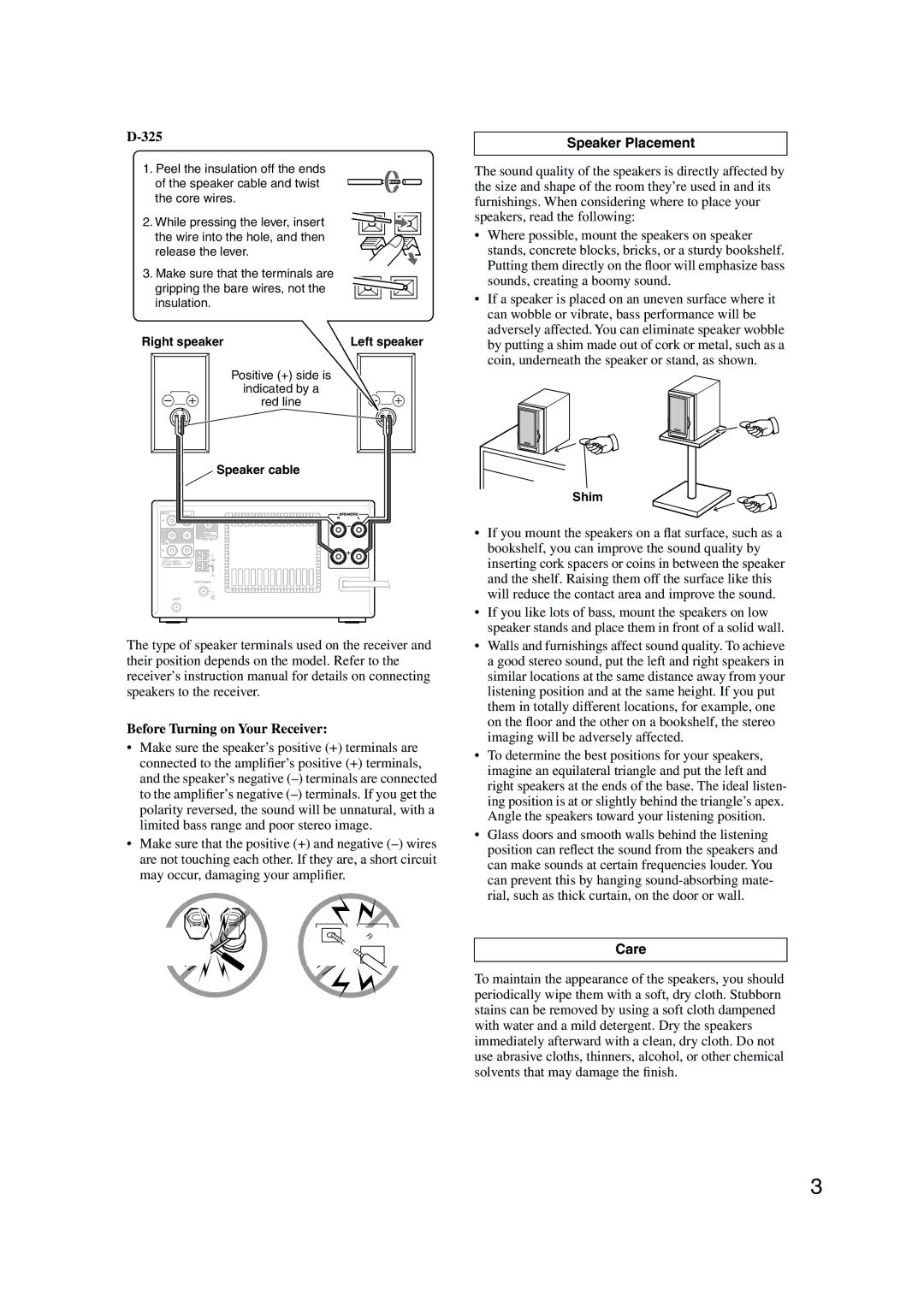D-325, D-425, D-525 specifications
Onkyo, a renowned name in the world of audio equipment, has introduced a line of compact bookshelf speakers that offer exceptional sound quality and design. The Onkyo D-425, D-525, and D-325 models stand out for their advanced technologies, practical features, and impressive performance that cater to both casual listeners and audiophiles alike.The Onkyo D-425 is designed with a 2-way bass reflex configuration to deliver balanced sound across a wide frequency range. It features a 12 cm woofers made of high-quality materials, ensuring deep bass and clear mid-range tones. The tweeter utilizes a 2.5 cm soft dome, which provides smooth high-frequency response, making it ideal for various music genres. The design incorporates a rear bass port, enhancing low-frequency performance while optimizing sound output for smaller spaces.
In comparison, the Onkyo D-525 elevates the audio experience further with its enhanced driver technologies. It includes a larger 13 cm woofer paired with a 2.5 cm silk dome tweeter, delivering a more pronounced low-end response and crystal-clear highs. The D-525 features reinforced cabinets that reduce unwanted vibrations, maximizing sound clarity and depth. Its elegant design not only looks great in any setting but also complements home theater systems effectively.
The Onkyo D-325, while more compact, does not compromise on sound quality. This model boasts a 12 cm woofer and a 2.5 cm tweeter, similarly structured to its siblings. Its compact size makes it an excellent choice for smaller rooms or as surround speakers in larger setups. The D-325 maintains clarity and detail across all frequencies, providing an immersive listening experience without taking up significant space.
All three models utilize Onkyo's proprietary technologies, including advanced crossover networks for seamless integration between the drivers. They also provide flexibility in placement with their compact dimensions, making them suitable for various home audio setups. Whether it's for casual listening, movie watching, or serious music enjoyment, the Onkyo D-425, D-525, and D-325 speakers provide listeners with various features, exceptional build quality, and above all, rich, captivating sound. Investing in any of these models promises a significant upgrade to your audio experience, showcasing Onkyo's commitment to audio excellence.

